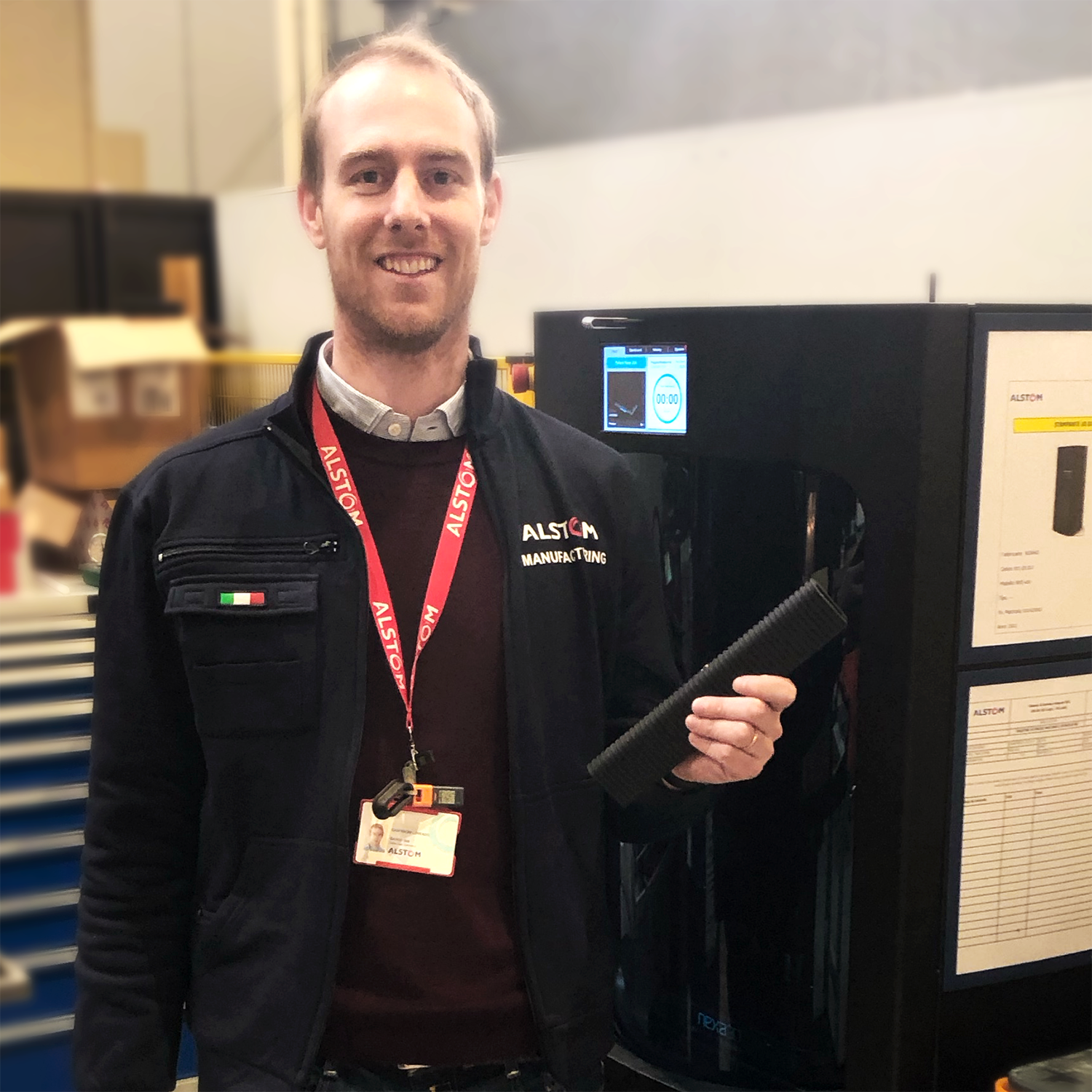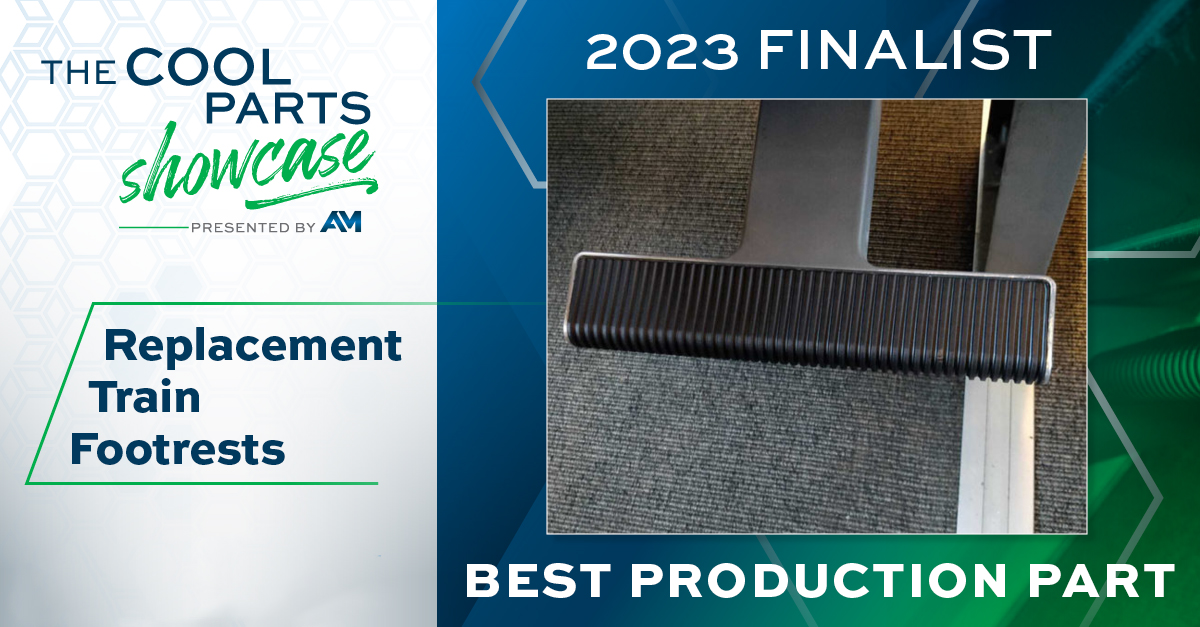Manufacturing for High-Speed Rail with High-Speed 3D Printers
How Alstom extends the life of their high-speed rail cars with 3D printed replacement parts

![]()
Alstom is one of the largest railway companies in the world. The high speed trains they manufacture can be found in every major rail market across 6 continents and over 60 countries around the world. Headquartered in France, Alstom has hundreds of facilities globally including a large manufacturing and service center located in Sesto San Giovanni, Italy.
That is where Lorenzo Gasparoni – a 3D printing and 3D scanning product leader sits. 3D printing came to this team as part of an innovation project in 2019, but in the last couple of years is proving to be a mainstream manufacturing option.

Challenge
Servicing aging rail cars around the globe
While Alstom produces advanced, next-generation high-speed engines and rail cars, they also provide service to a large existing customer base with fleets that can be over 30 years old. With aging rolling stock there are a wide range of components that need to be maintained or replaced in order to extend a rail car’s life. “In 30 years maybe the original suppliers of the product no longer exist, maybe the molds used to produce the parts were destroyed because after 30 years there’s a cost to just maintain a mold.,” says Lorenzo. Suffice to say, it can be a challenge to find or produce spare parts.
In mid-2022, Lorenzo’s team was tasked with producing hundreds of footrests that were in need of replacements – they would use 3D printing as an alternative to machine a new tool and molding for relatively low volumes. A higher speed 3D printer would also serve to improve their overall ability to respond better to customers’ urgent needs, “For our customer to stop a train to wait for spare parts is not economical, so we need to be able to provide them a quick solution.”
“The minimum order quantity for injection molding is over 500 parts, and at that volume the cost is about €200 per part. With the NXE 400Pro there is no minimum, and the cost is €50 per part so it’s much more affordable.”
Lorenzo Gasparoni, 3D printing and 3D scanning product leader at Alstom

Customer
Alstom
Industry
Rail
Products
- NXE 400Pro Industrial 3D Printer
- xABS3843 Resin (manufactured by Henkel Loctite)
Application
Manufacturing Replacement Parts
Advantages
- High speed allows for quick response to customer spare part needs
- 75% cost reduction per part vs low volume molds
- xABS resin provides sufficient durability
- High quality removes need for sanding, painting, and priming


Solution
3D printing 30 footrests in 10 hours
In September 2022, Lorenzo’s team added an NXE 400Pro ultrafast 3D printer from Nexa3D. “We worked with 3DZ to find the right technology. At first we were considering SLS, but the post processing costs were too high. We also looked at a couple different resin options including Carbon, Envisiontec, and 3D Systems, but in the end after reviewing the printed parts and materials, we went with Nexa3D.” Lorenzo notes that the large build volume, high speed, monocomponent resins with an open platform were all key benefits that made the NXE 400Pro stand out.
Vote for Nexa3D in the Best Production Part category!
Online voting opens July 10, 2023. Winners will be announced August 30.

After installing their new ultrafast 3D printer, they got to work printing footrests. It takes just 10 hours to produce 30 footrests on the NXE 400Pro. The xABS3843 resin – manufactured by Henkel Loctite – provides a great comp for Lexan in which the original footrests were molded, and the print quality is so good that no sanding, priming, or painting is required. Additionally, Lorenzo points out that there is a major cost savings with the 3D printed parts, “The minimum order quantity for injection molding is over 500 parts, and at that volume the cost is about €200 per part. With the NXE 400Pro there is no minimum, and the cost is €50 per part so it’s much more affordable.”
To date, Alstom team has produced over 100 replacement footrests that have been installed in rail cars. Lorenzo sees successes like the footrest as proof points to increasing the use of 3D printers like the NXE 400Pro for spare parts and beyond.
Ready to bring high-speed 3D printing and on-demand inventory to your customers?


